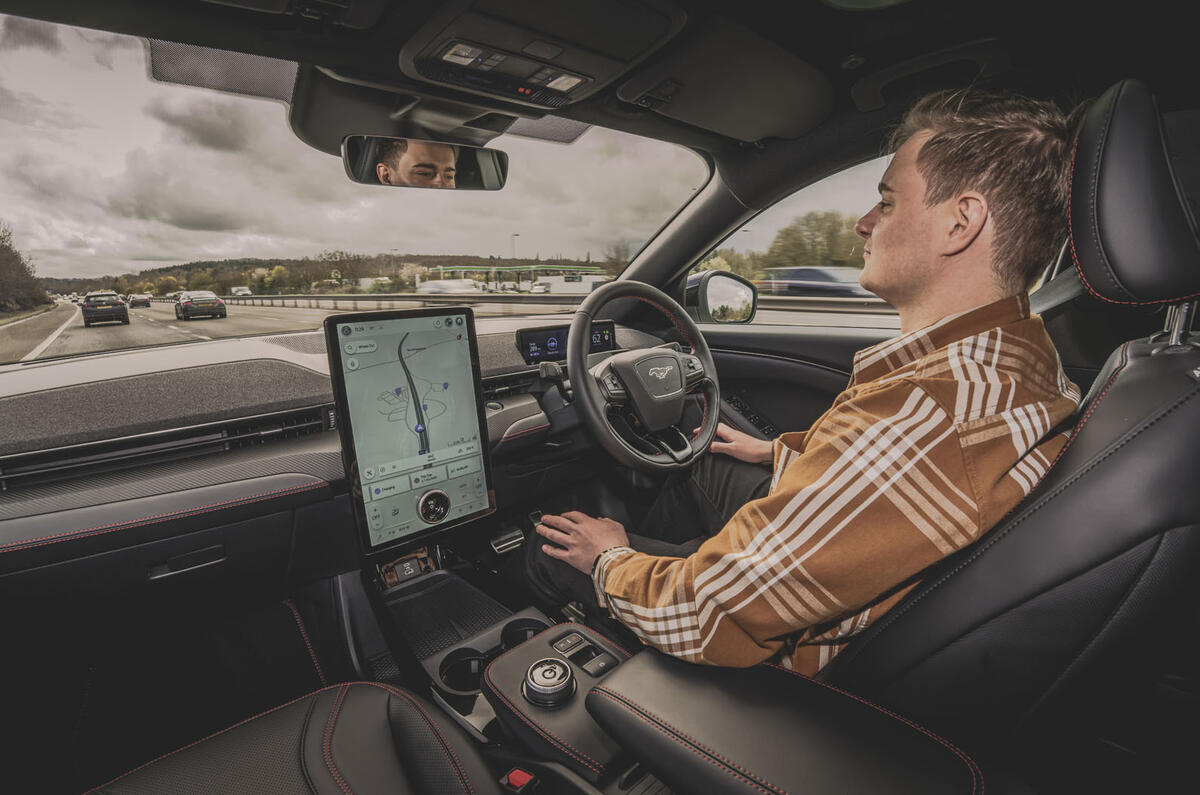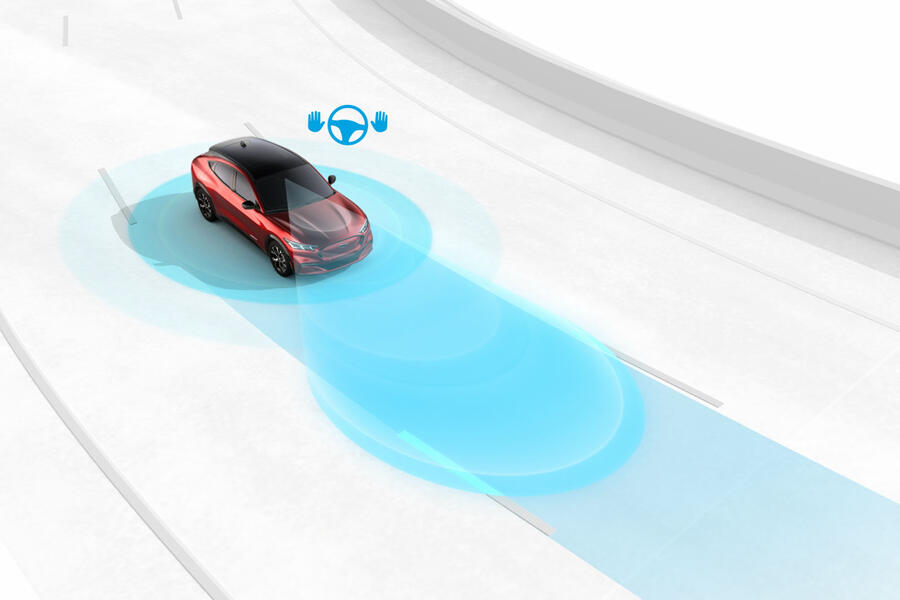Hands-off driving is now legal in the UK as Ford becomes the first car maker, from today, to offer semi-autonomous cruising on 2300 miles of British motorways – the first country in Europe to allow such a move.
Offered as a £17.99 monthly subscription extra for 2023-model-year Ford Mustang Mach-Es, BlueCruise allows drivers to take their hands off the steering wheel while the car drives itself in designated, premapped “blue zones” (which include the M25 and the M40), following approval from the Department for Transport.
Autocar has tried the new tech - scroll down to read what we think.
This new level two-plus autonomous tech – launched in parts of the US and Canada last year – works as an add-on to Ford’s current intelligent adaptive cruise control (IACC) and will take over when entering these zones with IACC active. Drivers will be alerted as to when they can remove their hands from the wheel.
Like IACC, BlueCruise will keep pace with other vehicles (up to the set speed and to a limit of 80mph), slow down with traffic and adjust speed according to road signs.
So this is what it’s like to take your hands off the wheel - legally - on UK roads in the @forduk Mustang Mach-E. Could this change the commuting game? pic.twitter.com/mbDMngAVbJ
— Autocar (@autocar) April 14, 2023
The new tech builds on this, with predictive speed assistance when approaching a sharp curve and “human-like” lane positioning that “subtly” shifts away from larger vehicles – such as lorries – in adjacent lanes, as drivers “tend to do intuitively”, Ford says. Unlike its US counterpart, the UK’s BlueCruise will need a driver’s steering input to change lanes.
BlueCruise still requires the driver’s attention to be on the road, though, and is dubbed a “hands-off, eyes-on” feature – given it is not fully autonomous level three, where the car can take over entirely in certain situations. This means the driver must remain ‘in the loop’, while the car controls the driving functions.
Therefore, an infrared driver-facing camera monitors the driver’s concentration levels and will shut off the self-driving mode – and even bring the car to a gradual stop – if the driver does not respond to alerts when the car believes they’re distracted.









Join the debate
Add your comment
I can it asa system of limited use, you can't do anything else in the Car while it's moving, your still responsible so how even if you have to drive a couple of hundred miles to work every so often your still not driving any less stress free, the system is built into every car because it saves time on the production line, Ford aren't the only company do this, in built up areas I can see the tech being useful.
I earn $100 per hour while taking risks and travelling to remote parts of the world. I worked remotely last week while in Rome, Monte Carlo, and eventually Paris. R I’m back in the USA this week. I only perform simple activities from this one excellent website. see it, Click Here to Copy......www.jobsrevenue.com
This is brilliant. I sometimes have to do a 250km drive to work and will arrive fresher and less tired with a system like this in my car. Safety and performance will be increased during the drive and on that first day on site after the drive. Can't wait for all cars to have this system.